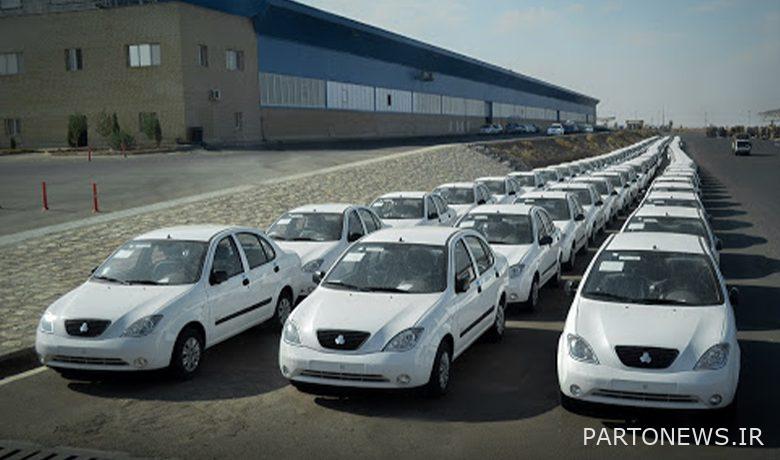New statistics of defective cars of Iran Khodro and Saipa

According to Tejarat News, two key factors in the automotive industry have led to the diversion of about one-third of the cars produced to the parking lot. Currently, 142,000 cars produced by two car companies have been parked in the area due to what is called a defect.
Studies show that the consequences of “mandatory prices” in the form of reduced automakers’ liquidity on the one hand and the challenges associated with sanctions on the other hand have disrupted the car production process in the form of shortage or defect of parts. Automakers have made requests to the government to solve the problems.
The problem of liquidity and lack of supply of electronic chips are the two main reasons for the increase in defective cars in the two major car companies in the country.
Production of defective products by Iran, Khodro and Saipa has risen again, so that the concern of this issue sent inspectors, deputies and experts of the National Inspection Organization to two car companies on Friday.
According to official sources, the deputies and experts of the National Inspection Organization visited two car companies to check the latest status of defective cars and delays in the car delivery process.
During this visit, the CEOs of Iran Khodro and Saipa presented a report on the number of defective products, so that Farshad Moghimi, CEO of Iran Khodro, announced the production of 97,000 defective cars and the depot of the mentioned products in the company’s parking lots, and Mirjavad Soleimani, CEO of Saipa. The company has acknowledged a defective product.
According to the statements of the CEOs of these two companies, currently 142,000 defective cars have been stored in the parking lots of Iran, Khodro and Saipa due to lack of parts. Thus, considering the production of 417 thousand passenger cars in the first half of the year, we conclude that 34% of the automakers’ products are incompletely produced.
Also, according to production statistics, it is predicted that car manufacturers have produced 2,250 vehicles per day, of which 764 units are stored in parking lots instead of being offered to the market.
As mentioned, the main reason for the creation of floor cars is the liquidity problem of car manufacturers and also the lack of electronic chips. This means that the production of defects has both internal and external origins, although its external origin is not unrelated to the internal problems of automakers.
But strange statistics have been published from the list of incomplete cars, statistics that show that in the current situation, 38,000 Pars cars and 14,000 207 cars have been stored in the automaker’s parking lot due to the lack of a depot. Statistics also show the production of 13,000 defective Dena cars and 7,206 depots. Thus, in Iran alone, 97,000 incomplete products have been produced.
But in Friday’s meeting, the CEO of Iran-Khodro also mentioned the deficit of some parts. According to him and some car industry stakeholders, it is clear that the global crisis of electronic chip deficit from last year and the lack of supply of car electronics such as ACU and ECU, multimedia, BCM, camera, FAM, airbags, displays, lights and… It has taken the possibility of commercializing many manufactured products and sent them to parking lots.
In just one car company, there are 12 deficits for each car produced. But the global crisis of electronic chip deficit, which has affected all global automakers, has also seriously challenged our country’s manufacturers since the beginning of this year.
At present, many domestic products need chips due to the increase in the level of technology, in a situation where out of an average of 12 fractions, 3 are related to chips.
But the supply of these parts is an important issue in the country’s automakers, so that according to some reliable news, the supply of chips has increased from 8 weeks to 48 weeks, which has led to a shortage of auto parts. As mentioned, the supply of these parts requires an advance payment for the order, even assuming supply within the next year, while financial problems have made this option difficult and impossible for car companies.
Why did floor cars increase?
As mentioned, two internal and external challenges increased the number of defective products of automakers. External problems are the supply of electronic chips that have plagued global automakers over the past year. But the internal problems of car companies that have fueled the production of imperfections are the declining liquidity resulting from the ordered price of cars.
In addition to mandatory pricing, rising costs of supplying parts and raw materials, problems in providing the liquidity needed to buy foreign currency, as well as the consequences of sanctions and the negligence of foreign manufacturers in timely delivery of parts, have also posed serious challenges to automakers. Along with the mandatory pricing, the production of each car has been accompanied by many losses. The pricing of the Competition Council is not in line with the production costs of the automakers, which has led to an increase in production losses.
Thus, one of the causes of floor cars is liquidity problems due to mandatory pricing. In this regard, some experts call the increase in deficiencies a hypothesis on the part of the automaker in order to pave the way for price liberalization by putting pressure on policymakers.
The correctness of this hypothesis has been proven in the past years, however, the growth of depot products in the current situation can not be connected with this hypothesis. However, carmakers have asked car policymakers to ease their liquidity problems so that they can buy chipsets from the open market immediately for at least the next three months.
Also, with the current problems, the automakers are not able to prepay and place orders, and for this reason, they have asked the policymakers to help implement the production plan of Mehr 1401 and later by solving the financial problems. Accordingly, carmakers have also issued a warning to policymakers that if the financial resources are not injected immediately and the process of order registration and currency allocation is not facilitated, the floor car will exceed 200,000 units and the production flow will be practically locked.
Thus, it must now be seen which policy and path the policymaker will choose to continue production in car companies. Continuation of the current path, which has less social consequences, however, will not benefit the consumer and the producer, or the path that will accompany the automaker in production and create public satisfaction in the market.
Defective part supply cycle
As it was mentioned, the grounding of the products of the automobile companies on the floor of their parking lot due to the deficit of parts has once again opened the door of the inspection company of the whole country to the automobile companies. This visit, however, in addition to examining the production of defective products, has created scandals in which parts manufacturers avoid delivering parts to automakers in order to specify their demands.
In this regard, Mohammad Reza Najafi Manesh, President of the Association of Homogeneous Powertrain and Parts Manufacturing Industries, says: “Manufacturers do not refuse to deliver parts to automakers. .
He continues: “Apart from this challenge, the rising debt chart of automakers to component manufacturers has also caused more challenges for component manufacturing companies to order electrical components that are supplied through external sources.”
Najafi Manesh believes that if automakers had been able to pay off the debts of component companies on time, the country’s auto chain would have suffered less from the global microchip crisis.
According to the president of the Association of Homogeneous Powertrain and Parts Manufacturing Industries, with this liquidity situation, component manufacturing companies are forced to place orders on a limited basis, and due to the crisis, the delivery of ordered parts will be time consuming.
Najafi Manesh, along with discussing the liquidity challenge and the global microchip crisis, believes that the issue of foreign exchange allocation by the central bank is a challenge that puts pressure on component makers to import the required parts.
Saeed Madani, former CEO of Saipa Automotive, also told our correspondent: “It is unlikely that parts companies have refused to deliver parts to automobile companies, and what has caused more products to be incompletely grounded in the parking lot of automobile companies should be in the liquidity challenge.” These companies searched.
The former CEO of Saipa continues: “Currently, car manufacturers are struggling to provide the liquidity they need, and this has caused them to be unable to pay their debts to component companies on time.”
As Madani says, the lack of timely injection of liquidity into parts manufacturers has prevented them from going through the previous process of ordering parts supplied through imports, and this has led to a slowdown in the supply of parts by them.
This car expert emphasizes: in addition to narrowing the payment route of car companies, the increase in the exchange rate and its jump from 3 thousand tomans to 27 thousand tomans over the past three years has also caused the ability of parts manufacturers to place orders in foreign sources.
The former CEO of Saipa believes that the main root of the production of defective cars should be sought in grammatical pricing policy. Madani says the inability of automakers to pay off debts to parts companies has occurred because automakers market their products below cost, and instead of recording profits in their financial statements, they see their loss wall rise every month. Are.
The former CEO of Saipa believes: If we want to solve the challenge of car production and it is possible for production cars to be marketed instead of being stuck in the parking lot, we must move as soon as possible to determine the price of car factories to make this possible. Provide automakers to stop loss-making production and market their products based on cost plus profit.
“When automakers are unable to pay the debts of component companies, it shows that they themselves will have difficulty in providing liquidity for the direct import of parts,” Madani said.
The former CEO of Saipa says: Of course, it should not be overlooked that the import of parts for car manufacturers is more difficult than parts companies due to the sanctions.
Auto expert Hassan Karimi-Sanjari also agrees with Madani.
“As long as the pricing policy is in place, the situation for car companies will be the same, because their financial capacity is declining more and more every day, and to pay,” the car expert told our correspondent about the increasing number of defective cars and the impossibility of commercializing them. Debts of component companies are becoming more incapable.
Karimi-Sanjari believes that the inability of automakers to inject liquidity into component companies causes these companies to have problems in producing and supplying the parts needed by the automaker.
The automotive expert continues: “This process causes a faulty cycle. In this cycle, the automaker does not pay its debts to the parts manufacturers. Slowly, this will lead to an increase in the number of defective cars and a decrease in the supply of automakers, so the flow of liquidity to the automakers’ accounts will become narrower and this cycle will continue.
Karimi-Sanjari emphasizes: Therefore, we should not give wrong addresses in connection with the decline in the supply of automakers, but the root of the problem is the policy of mandatory pricing and the inability of automakers to renew their financial resources.
Source: the world of economy
Read the latest car news on the Tejarat News car news page.

